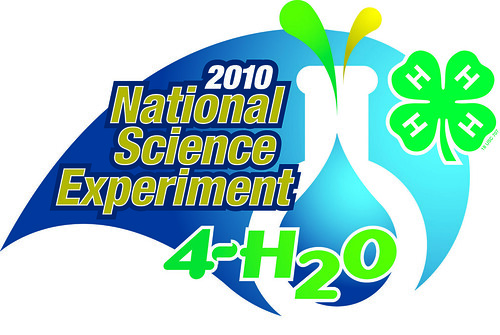
For the third year in a row, hundreds of thousands of youth throughout the country are gathering today to celebrate 4-H National Youth Science Day (NYSD) by simultaneously conducting the National Science Experiment.
This year’s experiment, 4-H₂O, teaches young people how increased amounts of carbon dioxide can affect aquatic animals, plants and other living organisms in lakes, streams, rivers and oceans. Using workbooks and online guides, the nationwide experiment will also help youth relate their 4-H NYSD experiences back to their own lives by teaching how to measure a carbon footprint.
So today we celebrate the proactive youth that are nurturing their interest in science, but we also recognize the commitment and innovative spirit of the Cooperative Extension System in the U.S. Department of Agriculture.
4-H programs are implemented by the nation’s 109 land-grant colleges and universities and the Cooperative Extension System through their 3,100 local Extension offices across the country. This year, the National Science Experiment was designed by North Carolina A&T University and the North Carolina Cooperative Extension Program.
Building upon the great work produced by North Carolina A&T University and the North Carolina Cooperative Extension Program, the system took the experiment—and the theories behind it—and made it their own to meet the individual needs and interests of their communities. For example:
In Petaluma, California, 4-H’ers conducted the 4-H National Science Experiment, lead by the Two Rock 4-H Robotics Project. The experiment wove the 4-H₂O curriculum into a demonstration about the use of robotics by using a Lego NXT robotic car to sample containers emitting CO₂ gasses.
Additionally, with a focus on the Chesapeake Bay, tonight the 4-H Lucky Clovers in Montgomery County, Maryland will host a county NYSD experiment complete with experiments and guest speaker, Douglas Lipton, Marquee Professor of Science and Technology at the University of Maryland.
NYSD is the product of Extension’s ability to take an idea and bring it to light in a localized way. As a result of this ingenuity, 4-H youth are armed with the necessary technical skills to help the U.S. maintain its competitive edge in their own communities, and in the global marketplace. Every county, every city, every town, and every community benefits from the opportunities that 4-H, the Cooperative Extension System and the nation’s land-grant colleges and universities provide young people.
With more than 200 National Science Experiments planned throughout the country, we welcome you to join us in celebrating 4-H National Youth Science Day.
